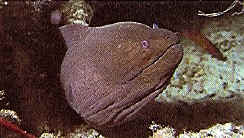Fishing in Ireland
The River Bann is the second longest river in Ireland. It rises in the Mourne mountains, flows into and then out of Lough Neagh, which is the largest freshwater lake in the Europe. The Lower Bann drains this and the northern half of Northern Ireland.
You can enjoy coarse fishing all year round in Northern Ireland which has long been recognized as one of Europe's best regions for the coarse angler. Two particularly notable venues for big matches are Lough Erne in Fermanagh and the Upper Bann river which flows into the vast inland sea of Lough Neagh. Both have held innumerable match fishing world records.

Here you can see me match fishing on the river Bann, Portadown.The match was five hour's and I weigh in 135lb of roach which won the contest. All nets on the day were over 80lb. So you can see the potential of the river, any one that as not fish for roach in N.Ireland as miss a lot.


Diving has been practiced in a variety of forms for centuries. Brave men using cumbersome and often extremely dangerous equipment have worked on shipwrecks, wrested treasure from the depths and performed extraordinary feats of civil engineering beneath the surface.
The unpleasant and risky nature of this work, coupled with restrictions of movement and vision imposed by the equipment, would have excluded any pleasure from the experience. The diver, tethered to the surface by his lifelines and air-supply hose, would have little time or enthusiasm for anything but the job in hand, his personal safety and his hopefully imminent return to the surface.
The unpleasant and risky nature of this work, coupled with restrictions of movement and vision imposed by the equipment, would have excluded any pleasure from the experience. The diver, tethered to the surface by his lifelines and air-supply hose, would have little time or enthusiasm for anything but the job in hand, his personal safety and his hopefully imminent return to the surface. Nor was there much pleasure for the wartime "frogmen" or human torpedoes- known as "charioteers"- who, despite comparative freedom of movement afforded by portable oxygen sets and frogman's fins, were subject to depth limits because they were breathing undiluted oxygen. In addition the discomfort of clammy so-called "dry" suits, to say nothing of the highly dangerous tasks they undertook, would distract the most romantic soul from the beauty which may have, at times, surrounded them. Despite their wartime experiences - clamping magnetic mines to the underside of enemy ships. cutting through anti- submarine nets or sitting astride as much as 500lb of high explosive contained within the human torpedo they steered, many of these ex-service divers, appreciating the potential of diving for sport, provided the hard core of early sport diving clubs.

Did not find the gold but still looking.


Above : Diving In South Cornwall.
Cornwall and good diving are synonymous. Its long coastline, bounded on three sides by the sea, together with its climate, clear water, abundance of shipwrecks and variety of underwater scenery and conditions, these offer sport diving as good, if not better, than any county in the British Isles.




